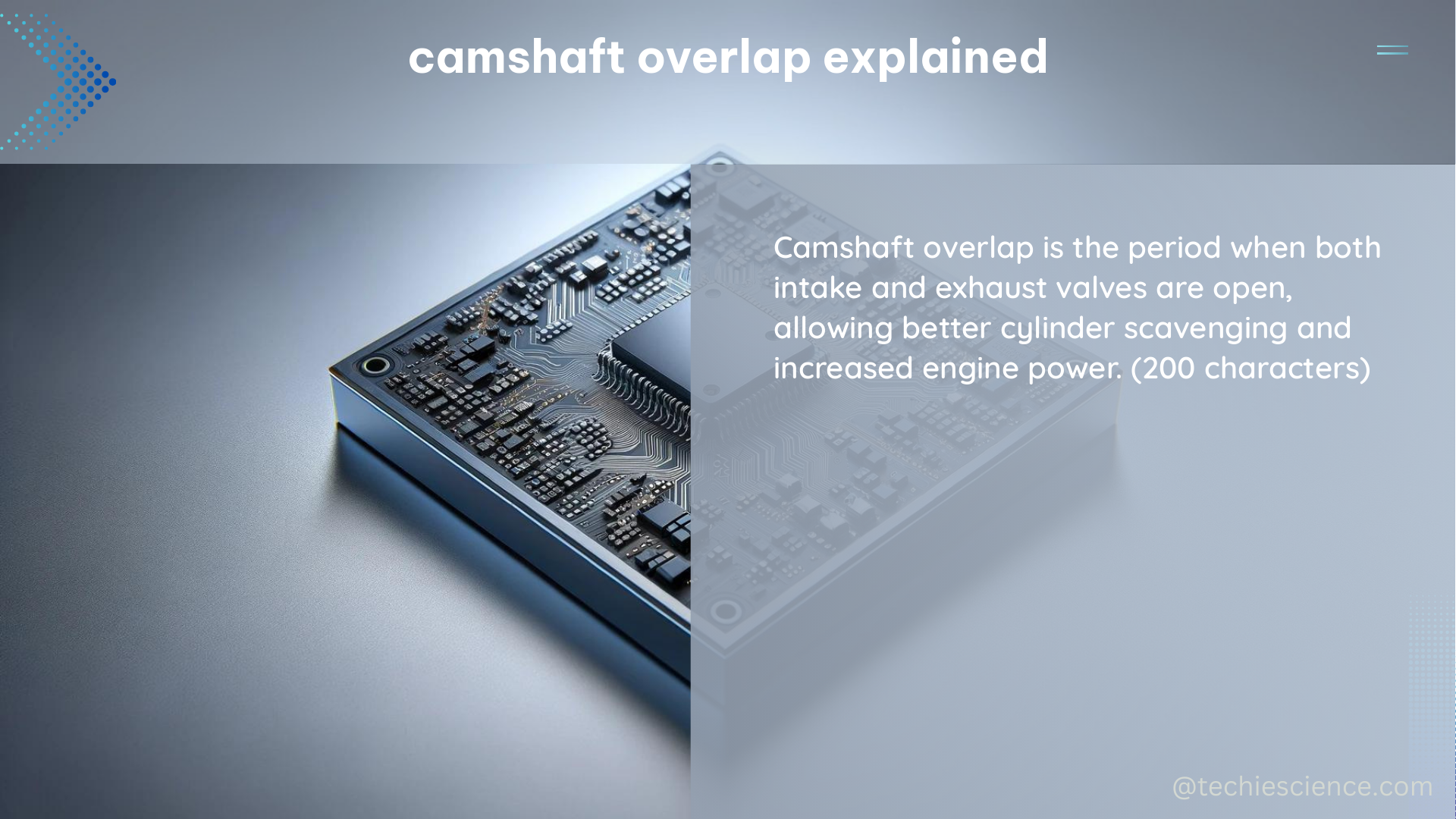Camshaft overlap is a critical aspect of engine performance, and it refers to the period when both the intake and exhaust valves are open simultaneously. This overlap allows for the exhaust gases to exit the cylinder while the intake valve opens to allow for fresh air and fuel mixture to enter. The amount of overlap can significantly impact engine performance, including power output, idle quality, and fuel efficiency.
Understanding Camshaft Overlap
To measure camshaft overlap, you need to know the intake and exhaust valve opening and closing points, as well as the Lobe Separation Angle (LSA) specs. The formula to figure overlap is: Intake Valve Opening + Exhaust Valve Closing. You can calculate overlap using either .050″ specs, which will give you overlap at .050″, or using seat specs, which will give you your overlap at seat.
Calculating Camshaft Overlap
For example, if you have a camshaft with an intake duration of 240 degrees and an exhaust duration of 240 degrees, and an LSA of 110 degrees, the overlap would be calculated as follows:
Intake Valve Opening (IVO) = 10 degrees before TDC
Exhaust Valve Closing (EVC) = 60 degrees after BDC
Using the .050″ specs, the overlap would be:
IVO @ .050″ + EVC @ .050″ = 10 + 60 = 70 degrees
Using the seat specs, the overlap would be:
IVO at seat + EVC at seat = 10 + 60 = 70 degrees
Factors Affecting Camshaft Overlap
The amount of camshaft overlap can be influenced by several factors, including:
- Camshaft Lobe Design: The shape and profile of the camshaft lobes can affect the timing and duration of valve opening and closing, which in turn impacts the overlap.
- Lobe Separation Angle (LSA): The LSA is the angle between the intake and exhaust lobe centerlines. A wider LSA generally results in less overlap, while a narrower LSA leads to more overlap.
- Valve Train Geometry: The design and configuration of the valve train components, such as the rocker arms, pushrods, and lifters, can influence the timing and duration of valve events, affecting the overlap.
- Engine Speed: As engine speed increases, the timing of valve events can change, which can impact the amount of overlap.
Importance of Camshaft Overlap
Camshaft overlap is a crucial factor in engine performance because it can significantly impact:
- Power Output: Proper camshaft overlap can improve volumetric efficiency, allowing for better cylinder filling and increased power output.
- Idle Quality: Excessive overlap can lead to poor idle quality, as the overlap can cause the engine to “suck” in exhaust gases, leading to unstable combustion.
- Fuel Efficiency: Optimizing camshaft overlap can improve fuel efficiency by reducing pumping losses and improving the scavenging of exhaust gases.
Adjusting Camshaft Overlap

It’s important to note that cam overlap cannot be changed, but valve overlap can be changed. This is because cam overlap is a physical characteristic of the camshaft lobes, while valve overlap can be adjusted by changing the rocker arm ratio or the valve timing.
Changing Valve Overlap
To change the valve overlap, you can adjust the following:
- Rocker Arm Ratio: Increasing the rocker arm ratio will increase the valve lift, which can affect the timing and duration of valve events, thereby changing the overlap.
- Valve Timing: Adjusting the valve timing, such as the intake valve opening (IVO) and exhaust valve closing (EVC), can also impact the amount of overlap.
By understanding the principles of camshaft overlap and the factors that influence it, you can optimize your engine’s performance to achieve the desired power output, idle quality, and fuel efficiency.
Conclusion
Camshaft overlap is a critical aspect of engine performance that requires a deep understanding of the underlying principles and factors involved. By mastering the concepts of camshaft overlap, you can fine-tune your engine’s performance and unlock its full potential. This comprehensive guide has provided you with the necessary knowledge and tools to become a true camshaft overlap expert.
References:
- Cam overlap… Help me understand – Page 2 – LS1Tech.com
- What is LSA and overlap? Are they important? Why do camshafts have 4 degrees of advance … – YouTube
- Camshaft Overlap Measuring – Yellow Bullet Forums
- Be The Camshaft Expert – MotorTrend
- Figuring Cam Overlap? – Team Chevelle

The lambdageeks.com Core SME Team is a group of experienced subject matter experts from diverse scientific and technical fields including Physics, Chemistry, Technology,Electronics & Electrical Engineering, Automotive, Mechanical Engineering. Our team collaborates to create high-quality, well-researched articles on a wide range of science and technology topics for the lambdageeks.com website.
All Our Senior SME are having more than 7 Years of experience in the respective fields . They are either Working Industry Professionals or assocaited With different Universities. Refer Our Authors Page to get to know About our Core SMEs.